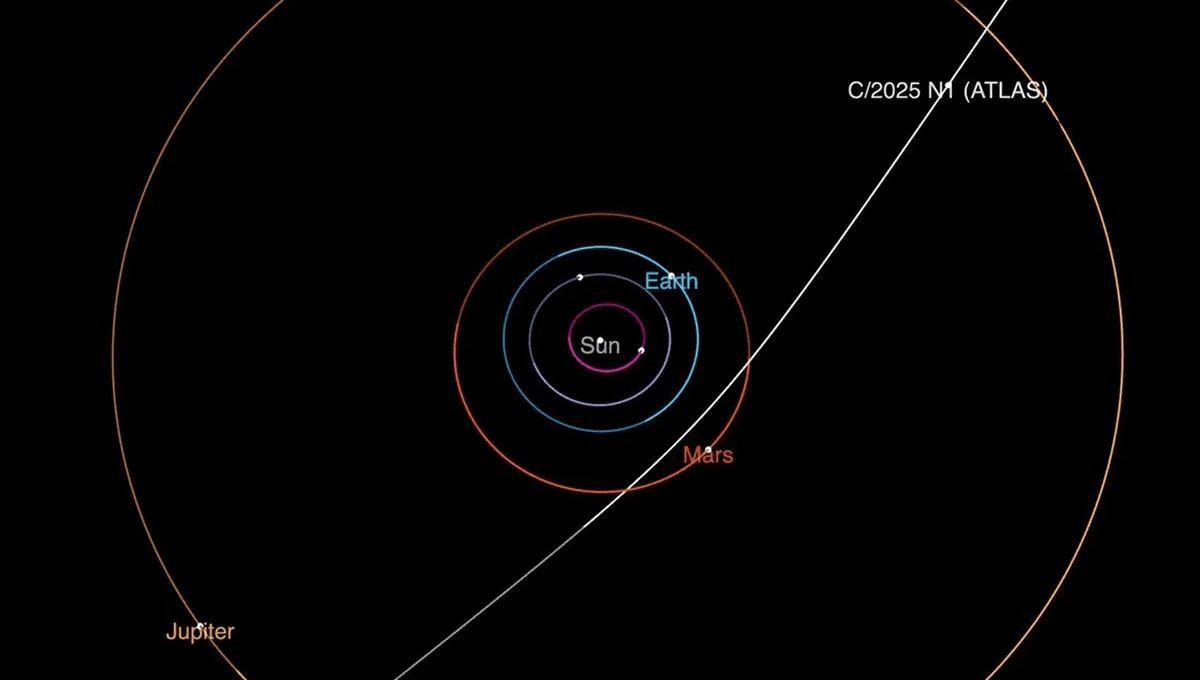
The nearest star to the Sun might be several light-years away, but this doesn’t make the Solar System isolated. Asteroids and comets that formed around other stars flow through the Milky Way across millions of streams. In fact, thousands of these interstellar interlopers are currently within the orbit of Neptune. The difficult job is finding them, as they tend to be very small in a big universe.
The rest of this article is behind a paywall. Please sign in or subscribe to access the full content.
So far, we have identified three. The first one was 1I/’Oumuamua, discovered in 2017, then Comet 2I/Borisov, in 2019. This year, we have found Comet 3I/ATLAS, which is being intensely studied by astronomers across the world, as well as robotic missions on other worlds and in deep space.
If you spot a moving object in the sky, you want to follow up on it. This allows you to confirm that the object is indeed real and not an artifact of the observing device, tracking its motion over multiple observations to be able to construct its orbital trajectory. Armed with that, researchers can trace the path of celestial bodies in actual three-dimensional space and not as a projection in the sky.
Kepler was the first to realize that the orbits of planets are elliptical, with the Sun sitting in a special position known as the focus. Every ellipse has two foci. Ellipses have another important parameter called eccentricity. Eccentricity of zero means a circle where the two foci are in a single point (the center). The closer the eccentricity is to one, the more squished the orbit is.
The Earth is close to zero, Venus and Neptune are even closer to circularity than our planet. Pluto has a more eccentric orbit with 0.25. Comets can have very high eccentricities. Halley’s comet has a value of 0.967. The Great Comet of 1997, Hale-Bopp, was around 0.9951. These objects are bound to the Sun and continue to orbit the Sun.
This is not the case for an interstellar object. Their eccentricity is greater than one, 1.2 for ‘Oumuamua, 3.5 for Comet Borisov, and between 6.1 and 6.2 for comet 3I/ATLAS, one of the many records of this latest interstellar interloper. These objects are on orbits that take them close to the Sun but are unshackled by the gravitational pull of our star.
These objects are also fast. Comet 3I/ATLAS is the fastest of the interstellar objects at 58 kilometers per second (130,000 miles per hour). Comets in the Solar System have reached those speeds and even higher, but they have done so in close proximity of the Sun, not when they are hundreds of millions of kilometers away.
That speed would be enough to escape the Solar System if Comet 3I/ATLAS were at the distance of the Earth from the Sun. It clocked it when it was more than twice that distance away. The pull of the Sun might have tweaked its orbit, but this interstellar visitor is just a passerby; it is not here to stay!
Source Link: Another Comet 3I/ATLAS Record Got Us Asking: How Do We Know An Object Is Interstellar?